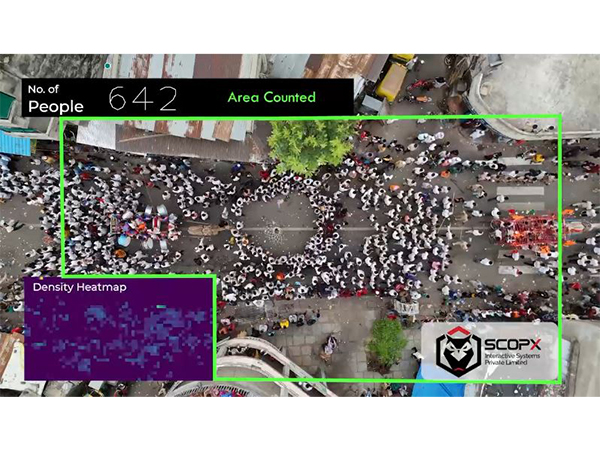New Delhi [India], June 10 (ANI): In an effort to prevent any stampede-like situations, the Crime Branch is making use of technical measures, including advanced software systems that leverage anti-stampede visual analytics through CCTV surveillance, according to a release statement by Ajit Raajyan, DCP Crime Branch, Ahmedabad.
Anti-stampede algorithms on CCTV cameras are a crucial advancement in crowd management, leveraging AI and image processing to prevent dangerous situations in densely populated areas.
These algorithms work through real-time monitoring, where AI-powered CCTV cameras continuously analyse video streams in real-time. Crowd density estimation is also a key component, where algorithms calculate the number of people in a given area. This can involve pixel-based analysis, object detection using machine learning models, and thresholding, where pre-defined threshold values for crowd density are established. When the detected density crosses these thresholds, it triggers an alert. Additionally, anomaly detection identifies unusual crowd behaviours such as sudden surges in movement, unusual clustering patterns, fallen individuals, and aggressive movements. Upon detecting a potential stampede risk, the system sends immediate alerts to security personnel or control rooms.
The benefits of these algorithms are numerous. They enable proactive prevention, detecting and warning of potential stampedes before they occur, allowing authorities to take preventative measures. They provide real-time insights, offering immediate and accurate data on crowd density and movement. This significantly improves safety in public spaces, reduces human error, and enables swift responses to risks. Furthermore, they optimise resource allocation, automating labour-intensive tasks and freeing up human operators for more complex decision-making. The collected data can also be analysed to improve crowd management strategies for future events.
However, there are challenges to consider. Accuracy limitations can arise due to occlusion, varying conditions, and bias in training data. Developing and deploying such systems can be expensive, and data privacy and ethical concerns are also considerations. Integrating new AI-powered systems with older CCTV networks can be complex, and human intervention is still crucial for effective intervention and crowd dispersal. Defining appropriate crowd density thresholds for different environments and cultural contexts can also be challenging.
These algorithms have various real-world applications, including large public gatherings, transportation hubs, shopping malls, stadiums, and tourist attractions. Overall, anti-stampede algorithms on CCTV cameras represent a significant leap forward in ensuring public safety, offering a powerful tool for proactive crowd management. Their successful implementation requires careful consideration of technological limitations, ethical implications, and the continued need for effective human intervention. (ANI)
Disclaimer: This story is auto-generated from a syndicated feed of ANI; only the image & headline may have been reworked by News Services Division of World News Network Inc Ltd and Palghar News and Pune News and World News
HINDI, MARATHI, GUJARATI, TAMIL, TELUGU, BENGALI, KANNADA, ORIYA, PUNJABI, URDU, MALAYALAM
For more details and packages












